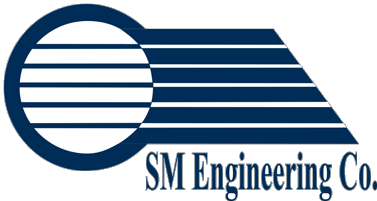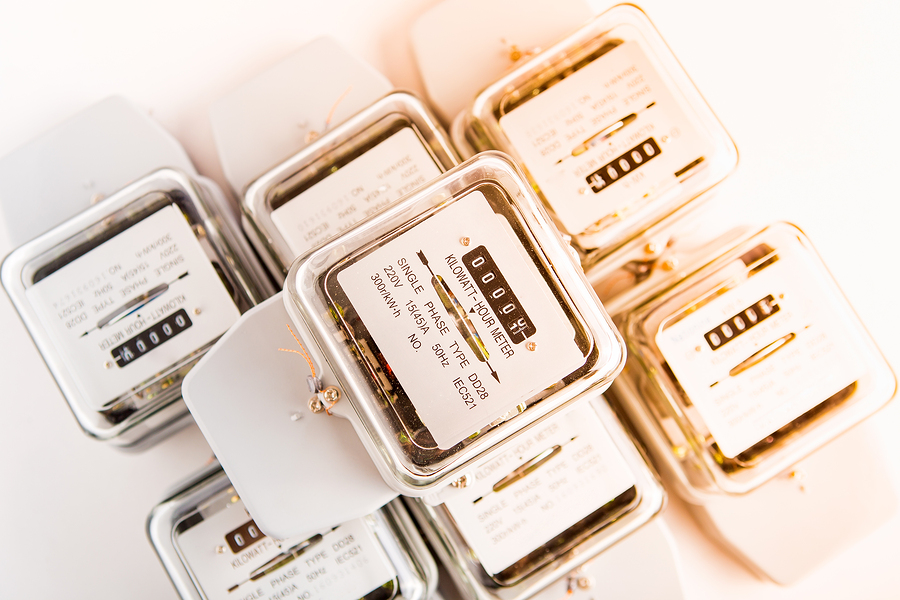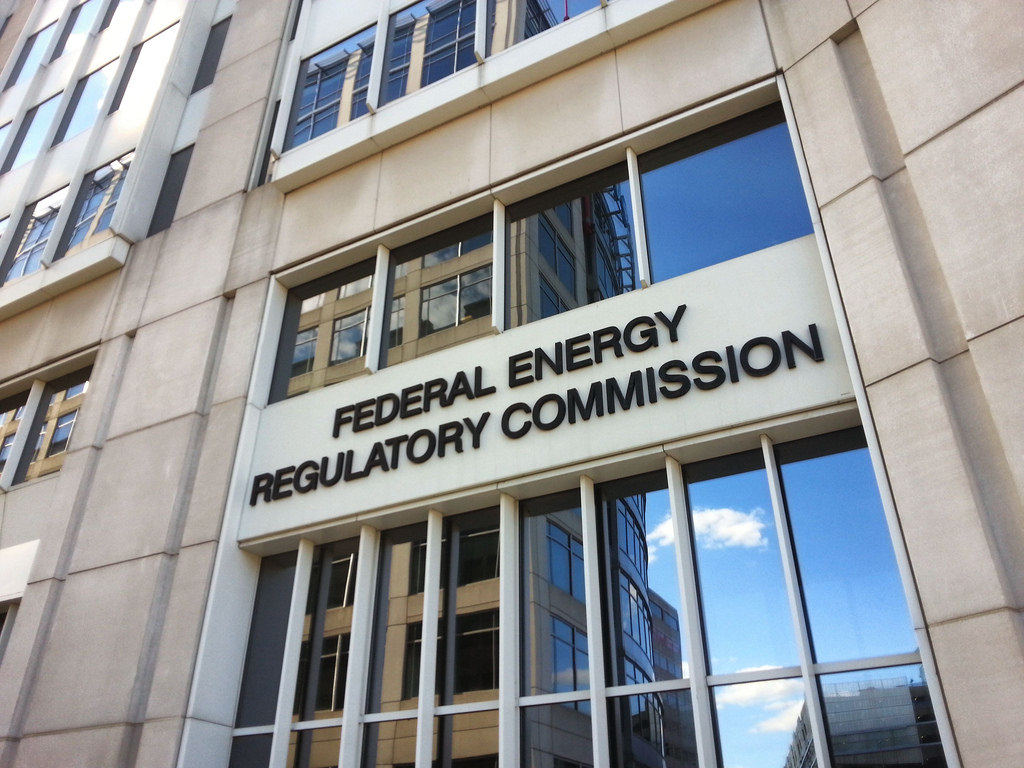SM Engineering - Success Stories & Case Studies
Success Stories of Our ClientsSME Stories
Over the years we’ve saved our clients over $150 million dollars on the electric, gas, water and sewer utility bills just by asking utility companies for the best rates possible. We do the work so that you can continue running your day-today-operations. We hope you enjoy the following success stories from our utility bill auditors.
Start-Up Surge
I was doing a site visit to investigate utility refunds and credits for a wood cabinet shop in Northern Indiana when a question was asked by the facility manager.
His question: Is it less expensive to leave the dust collectors and air compressor on all night and weekends when not needed or to shut off the equipment and incur a spike in power when turned back on in the morning of each day?
The company has close to 500kW in connected horsepower of equipment that is left running to avoid the start up spike in power. I advised them to shut off the machines whenever possible because the inrush power required to get the motors back up to speed happens so fast that the demand meter will not see the spike. This power company, as is typical in most cases, takes an average 15 minute window of maximum power used to set the demand for the month.
By understanding how the billed demand charges are set and shutting off unneeded equipment this company saved $7,500/month. A side benefit is their equipment will last longer because of the reduced operation hours.
I Can Change My Rate?
I was new in business; this was in 1990’s. I worked as professional engineer at SuperValu and also had operated SM Engineering for 8 years.
As I received our company electric bill from NSP (now known as Xcel Energy), I noticed that there was a rate sheet attached to the bill. I used to always throw it away and keep the bill to pay.
It was surprising to see that NSP had listed something like 15 different rates. My curiosity was aroused. I happened to own few apartment buildings and decided to compare the cost with different rates.
I remember thinking, ‘Oh my god.’ I could not believe that there were savings of $200-500 per year with different rates.
So I applied for rate change and talked to a utility representative. The representative said that this is nonsense and that I would save money over his dead body.
Of course, I saved money on the new rate and I established a great relationship with the utility representative.
Proving Your Business Is Eligible for a Utility Bill Tax Exemption
The Problem: Utility Bill Tax Exemption under Review
APG Cash Drawer had claimed an exemption on its utility bills that had come under review with the State of Minnesota. To resolve the issue quickly, APG needed to provide proof that they were indeed eligible for the claimed levels of exemption. After receiving a recommendation from a colleague, APG leadership reached out to SM Engineering to schedule a predominant use study.
The Solution: SM Engineering Completes a Predominant Use Study
SM Engineering’s first step in the predominant use study for APG Cash Drawer was a tour of their Minneapolis facility to gather information regarding their operation. Our engineer took note of their natural gas, electricity, and usages.. Then, our team put together detailed reports that calculated the maximum exemptions allowed by the State. We provided this report to APG so they could prove their exemptions to the State.
The Results: Thousands of Dollars in Savings
As a result of SM Engineering’s predominant use study, APG Cash Drawer provided documentation to the State proving they were eligible for their utility sales tax exemption. With our help, they continue to save thousands of dollars every year. “SM did a great job in completing the study quickly and at a high level. The documentation provided clearly laid out the results of the analysis and satisfied the requirements of the MN Sales Tax Auditor.,” APG’s controller reports. “I would definitely recommend SM Engineering to others.”
Wondering if you could be saving thousands a year on your utility bills? Contact SM Engineering to schedule your predominant use study today.
Sewer Meter Runs Afoul in Iowa, Revealing $75k in Savings
The Challenge
Foam Fabricators manufactures foam packaging materials. They renovated their facility in 2002 after taking over the building from another manufacturer. At the time, they decided not to invest in new water and sewer meters. Foam Fabricators uses water in their manufacturing process to create steam that acts as a catalyst with a resin to produce foam products. They also use water in cooling towers to form and cool foam molds.
The company was being billed for water and sewer based on the recorded flow. The number seemed high, so Foam Fabricators brought in the SM Engineering experts to take a look at their bill. A detailed audit showed the sewer flow was being billed in excess of the water supplied to the facility. This was impossible: the water coming into the plant was either going down the sanitary sewer, evaporating in the cooling towers, or lost in steam processing.
SM Engineering verified there was no other source of water coming into the building, such as from a well. We then asked the city about the discrepancy and learned the sewage meter had been prone to malfunctioning. Foam Fabricators was responsible to repair or maintain the sewer meter at their own expense.
The Solution
SM Engineering worked with the city public works director to remove the sewer meter that had run afoul. We then negotiated a new billing structure so Foam Fabricators would be billed based on supply water.
The best part was that we were able to negotiate a refund for Foam Fabricators of $28,973.44 based on previous overcharges. Additionally, leaks were discovered at various points in the production process and have since been corrected, ultimately lowering water and natural gas costs.
Moving forward, Foam Fabricators is realizing a 40 percent reduction in their water bills simply by being billed under the correct sewage rate. That’s a total refund of $28,973.44 and annual savings of nearly $50,000.
Here’s what Foam Fabricators had to say about our work:
“We received a credit to our water account for nearly $29,000. SM Engineering took care of all the paperwork. The completed documents were e-mail to us for signatures. They did all of the leg-work and the entire process took less than 2 months.” Karen Carvell, Assistant Controller, Foam Fabricators, Inc.
If your sewer bill seems a little high, contact the utility bill experts at SM Engineering for a no-obligation bill audit. Schedule your no-obligation review today.
Don’t Throw Money Down the Sewer Drain
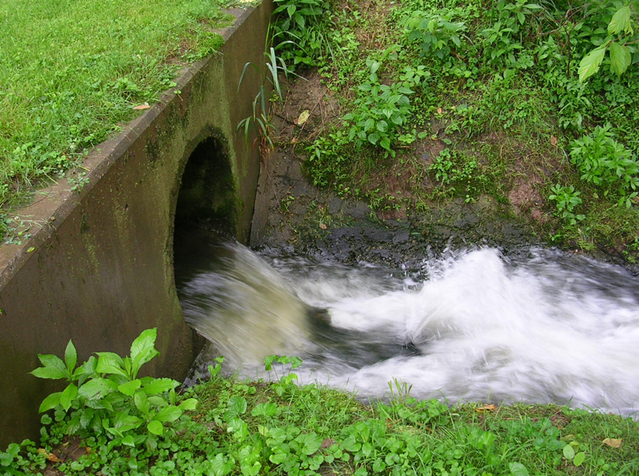 Cities charge manufacturers for what their facilities discharge down the drain and through municipal sewer systems. Your bill fluctuates depending on the amount you discharge through the sewer system. For many manufacturers, sewer charges can add up to tens of thousands of dollars a year.
Cities charge manufacturers for what their facilities discharge down the drain and through municipal sewer systems. Your bill fluctuates depending on the amount you discharge through the sewer system. For many manufacturers, sewer charges can add up to tens of thousands of dollars a year.
The Sewer Charge Challenge
The SM Engineering audit team was dispatched to a plastics company to examine their water and sewer bill. The company’s injection molding presses used city water as a coolant, which was discharged into the sewer after use.
A closed-loop cooling system would have eliminated the coolant water from entering the sewers at all. The plastics company hoped to invest in a closed-loop cooling system in the future, but did not have the funds to make that costly upgrade when it called SM Engineering.
SM Engineering’s Solution
Since we knew a closed-loop system was out of reach, we came up with a more cost-effective solution. Our audit team had discovered roof drains near the injection molding machines. This could be used to discharge the water from the molding machines to the storm sewer rather than through the sewer system.
We contacted the state to obtain the needed discharge permits. Then, our team helped the facility reroute the coolant water through the roof drains.
This simple, cost-effective solution saved the company $45,000 a year in sewer bill costs. What’s better, over four years, the company had saved enough to purchase a closed-loop cooling system. The new system saves the company an additional $20,000 a year in water costs. That’s approximately $65,000 a year in savings since calling in the SM Engineering team.
How much could our crack team of auditors save your company in utility bills? Schedule a call with SM Engineering today.
Save $60,000 by Flipping a Switch
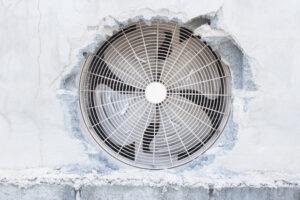 The utility bill experts at SM Engineering have seen just about everything. After a utility bill audit, we’ve found facilities that are maximizing their energy savings and companies that had to make substantial investments to reduce utilities costs. But for a bottling plant in Pennsylvania, a simple—and free—flip of a switch saved the company thousands.
The utility bill experts at SM Engineering have seen just about everything. After a utility bill audit, we’ve found facilities that are maximizing their energy savings and companies that had to make substantial investments to reduce utilities costs. But for a bottling plant in Pennsylvania, a simple—and free—flip of a switch saved the company thousands.
The Energy Cost Challenge
The bottling plant contacted SM Engineering to conduct a predominant use energy tax study. The company hoped to take advantage of a Pennsylvania manufacturer tax credit. The facility’s ventilation was designed to accommodate a propane-powered forklift. The ventilation fans worked overtime to clear out carbon monoxide from the forklift exhaust. And in wintertime, the heating system worked hard to heat the outside air the fans drew through the facility.
This system was great when the facility used propane-powered forklifts. But it had switched to electrical ones several years ago. Despite this, the ventilation system was still pumping in—and heating—outside air as if the propane forklifts were still in use.
SM Engineering’s Solution
Our solution for the bottling plant was simple. After a utility bill audit and site visit, the SM Engineering auditors alerted the plant’s management team of the operating error. By simply turning off the unneeded ventilation fans, the company could save thousands of dollars.
As a result, the manufacturer has saved an average of $60,000 a year on energy costs after making this simple—and free—fix. How much savings could a no-obligation, no-cost study of your energy use find your company? Schedule a call with SM Engineering today.
Why Meter Size Matters
Shampoo Manufacturing Company: A Case Study
Not long ago, we got a call from a shampoo manufacturing company regarding its high water bill. The company had moved its manufacturing to a different building and moved its distribution and warehouse into the former manufacturing plant. The meter for the manufacturing building was large enough to accommodate water-intensive shampoo manufacturing. But now that the building was used for dry storage and distribution, the meter was much too large. The company was paying more than $600 a month in unnecessary meter fees.
The experts at SM Engineering quickly uncovered the oversight and helped get the meter resized. Though this required a small investment in new equipment, these initial costs were recovered in just three months. Now, the company saves more than $600 a month on its water bill.
Meter Size Matters
Our shampoo manufacturing client’s experience isn’t unique. We frequently find meter size discrepancies at our clients’ facilities. Investing in meter updates can save you hundreds—or thousands—a year on your utility bills if you are charged based on meter size, a common way utilities calculate water bills.
If your water bill is based on a meter charge, sometimes called a basic charge, the size of your water meter is what determines the amount you pay. A meter charge does not take into account the actual amount of water you use. Instead, it charges you a flat fee based on the capacity of the meter. That’s why it’s important to regularly audit your water use and make sure your meter is not too large for your needs.
If you’ve recently moved into a new facility or reconfigured how you use your existing facility, it pays to look into the size of your water meter. Updating your meter may save you hundreds a month in utility fees. To learn if you’re paying too much for water, contact the experts at SM Engineering today.
Saved an Apartment Complex $14k+
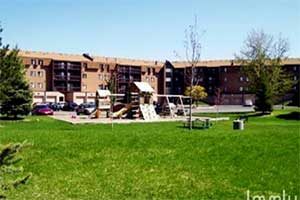 Project Overview
Project Overview
Our client has a 114 unit apartment property in the Midwest. Due to high usage year around, their electricity, gas and water costs were significant and continued to grow. The property manager contacted SM Engineering to determine whether they could help them save money on their utility bills.
The Problem
The property’s electric, water and gas bills were calculated based on standard rate options, which did not take into account their specific type of usage.
The Solution
We conducted a full utility rate analysis and advised the manager to make changes that took into account their consumption patterns throughout the year. These included switching one of their electric meters from general service to small general service time of day, which resulted in savings of $300 per year. In addition, the gas service was switched from firm service to guaranteed transportation service, which generated savings of $3,000 per year. Last but not least, the water service classification was changed, resulting in ongoing savings of $2,500 per year and as well as a refund of $8,000.
The Result
Over the course of one year, the property owner was able to recover $8,000 in refunds and $5,800/year on-going savings on electric, gas and water without any investment.
The Benefit
The client ongoing savings increased their bottom line, allowing them to invest the funds in other areas of their business.
Steering Components Manufacturer Saves Thousands in Sales Tax Exemptions
The Problem: Were Expanded Operations Leaving Money on the Table?
Since our partnership began in 2004, Lares had expanded their manufacturing operations in the Twin Cities metro area. With the expansion came an increase in utility use. After a few years, Lares Corporation realized they should reevaluate their utility bill sales tax exemptions.
The Solution: SM Engineering Completes a Predominant Use Study
Lares scheduled a predominant use study with SM Engineering. Our engineers toured the manufacturer’s facility. They determined which pieces of equipment were connected to each of their three electricitaly meters. Then, the SM Engineering team put together a detailed report that outlined the exempt and non-exempt usage amounts for those utilities and compared it to what Lares was currently claiming.
The Results: Three Exemptions on Three Meters Saves Lares Thousands
After our predominant use study, we found Lares was needed to update the exemptions on all thereof their electricality meters. With SM Engineering’s help, Lares is now claiming three different exemption percentages on their utility accounts and is no longer worried about facing penalties in the future. As a result, the manufacturer will continue to save thousands annually.
Lares Corporation was extremely satisfied with SM Engineering’s level of professional knowledge, as well as our ability to deliver the results we promised.
How might your recent expansion affect your sales tax exemptions? Contact SM Engineering to schedule your predominant use study today.
A Sales Tax Audit Uncovers Thousands in Potential Savings
The Problem: Leaving Money on the Table
During a routine sales tax audit, a Minnesota State auditor discovered that the dry cleaning company was not claiming a sales tax exemption on their utility bills that they were eligible for. The auditor recommended the company contact SM Engineering to complete a predominant use study of their utility use to determine how much the company could save annually.
The Solution: SM Engineering Completes a Predominant Use Study
The company called us to schedule their predominant use study. Our team of engineers toured the dry cleaner’s facility and gathered data from their natural gas, electricity, and water usages. Then, taking into consideration the environment required to perform the company’s operations, the SM Engineering team put together a detailed report that outlined the exempt and non-exempt usage amounts for those each of those utilities.
The Results: Thousands of Dollars in Refunds and Savings
As a result of our predominant use study, the dry cleaning company was able to place the sales tax exemptions on their utility bills. Not only did the dry cleaning company receive more than $10,000 in sales tax refunds, it reduced its annual bill by $2,300.
Wondering if you could be saving thousands a year on your utility bills? Contact SM Engineering to schedule your predominant use study today.
Concrete & Aggregate Company
Concrete and aggregate manufacture operating in the Kansas City area. The company operates eight (8) year round ready mix concrete and aggregate plants, along with a handful of “popup” plants used when demand is higher. The concrete plants utilize electricity, natural gas and water to produce the concrete product, SM Engineering was contracted to reduce utility spending and recover any available refunds.
THE PROJECT
Concrete plants are unique in the way they use all three main utilities for production throughout the year. In order to maximize savings and refund potential SM Engineering analyzed all three utilities. SM Engineering visited multiple sites and collected information on equipment, facility size and operating procedures. A full rate analysis was then conducted and three years of past paid bills were analyzed for all available refund and future credits.
THE RESULT
SM Engineering completed predominant use studies for electric, gas and water meters for many of the concrete and aggregate sites. The predominant use studies resulted in an estimated refund of $50,000 and yearly future savings of $18,000. The client will continue to benefit from the savings for years to
come.
The Tale of 101 Meters

3842103 – farmers unloading corn at the grain elevator
The Challenge
The grain co-op owned and managed several facilities across south-central Minnesota. Each location served a different purpose and had a variety of equipment, from agronomy, fertilizer blending, machine sheds, grain elevators, feed mills, temporary storage bins and bunkers, grain drying facilities, and even convenience stores.
Every one of these locations required access to water, gas, and electricity. In total, 101 meters served these various facilities. The co-op paid more than $1 million annually for utilities across all locations. It was time to look at where all this money was going and if there was an opportunity for savings.
The co-op contracted with SM Engineering to audit its usages and previous billings for all accounts. We inventoried the loads on all 101 meters, conducted rate studies by meter, and looked for errors and overcharges on all line charges on the bills.
What SM Engineering Found in Its Utility Bill Audit
Our deep dive into the metered usages revealed many underlying issues—and opportunities for savings. SM Engineering uncovered meters that served unknown loads and a meter that was actually for a different company. The co-op was paying another business’s bill!
Some water meters were charging the co-op a city sewer rate when there was no sewage line attached to the location, as the water was being used strictly for agricultural purposes. Many meters were dormant for 10 months of the year, but usage increased exponentially during harvest months. This created excessive demand and power factor charges.
A line-by-line utility bill review also uncovered credits available for agricultural use the co-op was not utilizing. This was understandable, as it’s not easy to apply for or maintain the credits once you have them in place.
The Solution
SM Engineering utility bill experts worked with the co-op and its utility companies to sort out its utility usage and take advantage of available agricultural credits. The co-op expects to receive more than $55,000 in refunds and ongoing annual savings of $18,330.
It pays to have SM Engineering review your bills for refunds, errors, and possibly better rates. If you operate a grain co-op or other business with multiple facilities, you may be paying too much for utilities. Schedule your no-obligation utility bill audit today to uncover potential utility bill savings.
A Puzzling Rate Change
As time went on, I gained a lot of experience by studying different options and riders offered by utility companies.
Leaning on this knowledge, I changed the rate for a client from a regular rate to a rate based on time of use (this means energy used during peak hours versus off peak hours have different costs).
After requesting billing history for 3 months to review the new charges, the cost was higher by $100 on the new rate.
I could not understand it. I decided to visit the site and checked as to how the electricity was being used.
After my visit, I was still stumped. I could not understand as to why the cost had gone up.
I contacted the utility company and talked to a representative. They did a little digging on their end and upon further investigation showed that meter reader had recorded the readings wrong.
The utility company was more than happy to refund the money and write a letter of apology.
Big Savings by Reclassifying
One printing client was getting billed on a demand-based rate by their utility provider.
After reviewing their operation and other rate options, I changed the account to a non demand-based rate and saved money in multiple areas.
This new rate not only lowered their monthly fee and lowered the cost of electricity per kWh used, but it also saved substantially with one of the riders that was based on the type of rate the account was on.
This one small change resulted in savings of $1,200 per year.
When We Got It Wrong
I changed a rate for one client from regular rate to demand-based rate.
Having been very successful in saving money for clients with this type of work, I was shocked to find the cost of new rate was higher.
I had to know why this rate did not work out for the client so we went back to work. Further investigation showed that this electric meter was connected to a pool pump. This resulted in high demand and led to the new rate costing our client more money.
SME quickly reversed the rate back to the original and issued a check to client for the difference.
The Case of Too Many Electricity Meters: A $68,000 Mistake
Simple and Cheap Can Be Costly
One of our clients, a hardwood flooring manufacturer, faced a happy dilemma: the company had experienced rapid growth in the last five years and needed more space. They decided to double their manufacturing production by expanding one of their facilities.
When it came time to add utilities, the simplest and cheapest option was to add a second transformer and separate electrical service and meter for the new space. When construction was complete, the facility had two meters, each with a measured demand between 600 and 1,100 kilowatts.
But there was a cost to this simple and cheap solution. To recoup their construction and maintenance costs, the utility company charged a monthly facility fee, administration fee, and meter charge . . . for each meter. Saving a little cash during construction cost the manufacturing company $68,000 a year in utilities fees.
A Simple Solution for Savings
The manufacturing company contacted SM Engineering to discover why their utility bills were so high. That’s when our experts discovered the dual meters and electrical services. We combined the two meters and negotiated a more favorable rate for our client.
To do so, the company had to invest in five power electrical poles to tie the services together for a one-time installation cost of $60,000. But with the $68,000 in annual savings from combining the services, our client recouped the cost of the installation in just 11 months. They’ll enjoy the utility savings for years to come.
The Moral of the Story
The moral of the case of too many meters is to do your homework. Don’t add another meter until you’ve investigated the long-term costs of doing so. SM Engineering can help you uncover utility savings and anticipate future costs. Contact the experts at SM Engineering today.
A Rocky Start to a New Friendship
Upon my first meeting with a large custom-thermoformed and fabricated plastics component packaging company in North Carolina the President of the company was very skeptical.
He did not have much time to speak with me but wanted my assurance that SM Engineering could help his company. I explained to him that our engineers had reviewed his utility bills and have found a savings opportunity.
The client looked at me and said he wanted my assurance that SM Engineering Company was not going to take advantage of his company. He was concerned because he did not know me or my company and was not sure if he could trust what I was telling him. I assured him that he could trust me even though we just met.
When I called the President of this company after a refund of $68,000 was issued to his business he told me that I was “his new best friend” and thanked SM Engineering for our work and the savings that we retrieved for his business.
Case Studies
Want to learn more about utilities? We’ve pulled together dozens of fascinating case studies for systems, purchasing and industrial stories.
Energy Resources
At SM Engineering we follow all of the latest data on energy so you don’t have to. But in case you’re curious, we’re sharing some of our favorite energy resources.
Legal Rulings
Find legal rulings by state related to tax exemption situations.
